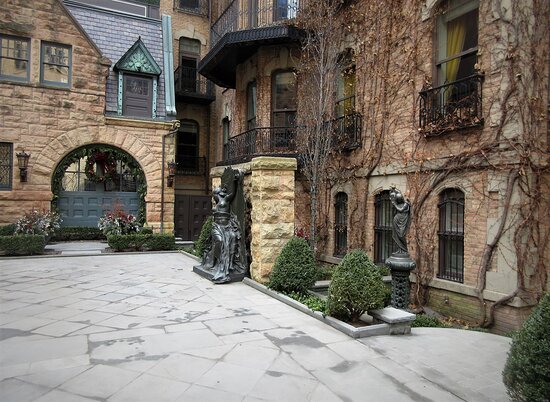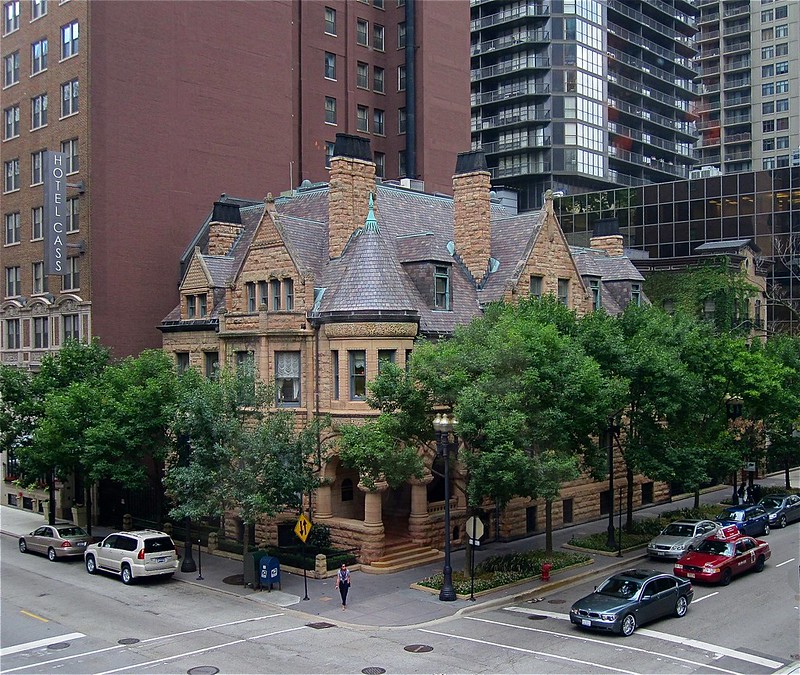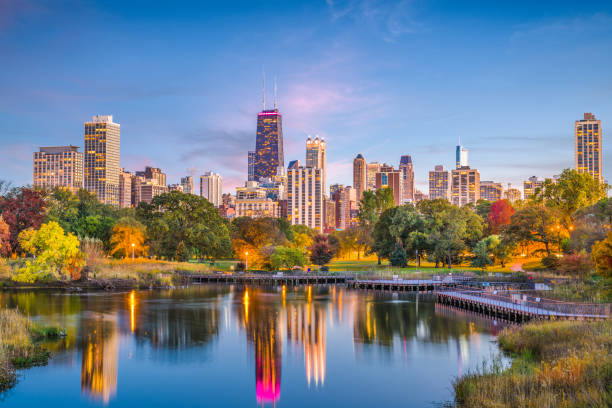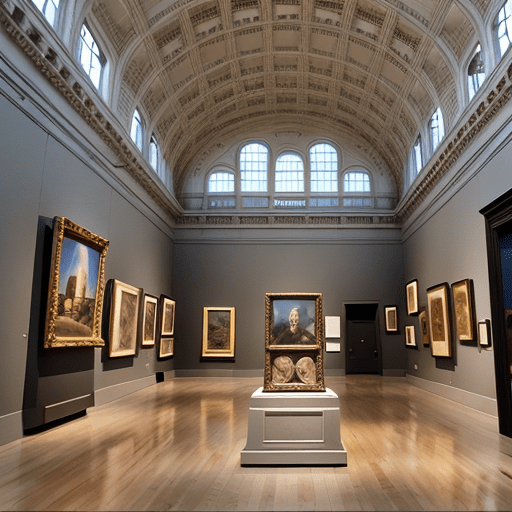Cable House Chicago: A Historic Gem in the Windy City
Chicago, known for its stunning architecture and rich history, is home to many iconic landmarks. One such gem is the Cable House, a magnificent example of Richardsonian Romanesque architecture that stands proudly on East Erie Street. Built in 1886 by the renowned architectural firm Cobb and Frost, the Cable House holds a significant place in Chicago’s architectural and cultural heritage. In 1991, it was designated as a Chicago Landmark, ensuring its preservation and recognition for generations to come.
A Glimpse into the Past
The History of Cable House
The Cable House was commissioned by Ransom R. Cable, the president of the Chicago, Rock Island and Pacific Railway Company. This grand mansion was built as a testament to Cable’s success and his prominent position in Chicago’s elite society. Designed in the Richardsonian Romanesque style, the Cable House showcases the unique blend of medieval European influences and American architectural sensibilities.
The Architectural Marvel: Richardsonian Romanesque Style
Richardsonian Romanesque architecture, named after its creator Henry Hobson Richardson, gained popularity in the late 19th century. This architectural style is characterized by its robust stone construction, rounded arches, and ornate detailing. The Cable House exemplifies these characteristics with its imposing facade, intricate carvings, and picturesque proportions.
A Gilded Age Relic
The Cable House is one of the few remaining structures that provide a glimpse into Chicago’s Gilded Age. During this period, the city experienced rapid growth and prosperity, attracting wealthy industrialists and entrepreneurs. The Cable House served as a symbol of the opulence and sophistication that defined this era, and it continues to captivate visitors with its timeless elegance.
Exploring Cable House
Exterior Facade: A Feast for the Eyes
As you approach the Cable House, you’ll be greeted by its awe-inspiring exterior facade. The peach-colored stone, meticulously carved details, and prominent arches make for a truly breathtaking sight. Take a moment to admire the intricate craftsmanship and the architectural nuances that define the Richardsonian Romanesque style.
Inner Courtyard: A Tranquil Escape

Step into the inner courtyard of the Cable House, and you’ll discover a serene oasis amidst the bustling city. Enclosed by the mansion’s walls, the courtyard offers a peaceful retreat where you can soak in the beauty of the surroundings. The carefully manicured gardens, elegant fountains, and charming seating areas create a harmonious ambiance that transports you to a bygone era.
Architectural Highlights: Notable Features of Cable House
The Cable House boasts several architectural highlights that showcase the mastery of Cobb and Frost. One notable feature is the grand entrance, adorned with intricately carved stone detailing and a majestic arched doorway. Inside, you’ll be awe-struck by the soaring ceilings, ornate fireplaces, and exquisite woodwork that reflect the craftsmanship of a bygone era.
Historical Significance: Cable House and Chicago’s Elite
The Cable House holds great historical significance in Chicago’s elite society. In the late 19th and early 20th centuries, the area west of Michigan Avenue, where the Cable House is located, was known as “McCormicksville.” This neighborhood was home to prominent families, including the McCormicks, who played a pivotal role in shaping Chicago’s history and culture.
Cable House Through the Years
The McCormick Era: A Legacy Preserved
In 1902, the Cable House was purchased by Robert Hall McCormick for his son, Robert Hall McCormick III. The house became the residence of the younger McCormick, who was the head of the McCormick Estate. During his tenure, the Cable House witnessed notable events, including the visit of renowned inventor Guglielmo Marconi in 1917. The McCormick family’s presence added to the prestige and allure of the mansion.
From Residence to Funeral Home
After the McCormick family’s occupancy, the Cable House underwent a transformation. In 1926, it was sold and repurposed as a funeral home. This change in function marked a new chapter in the history of the Cable House, as it continued to serve the community in a different capacity.
Present-Day: A Steward of History
Today, the Cable House is occupied by the offices of Driehaus Capital Management, led by Richard H. Driehaus. Richard, a prominent Chicago financier, preservationist, and philanthropist, has been instrumental in preserving and restoring historic buildings throughout the city. His dedication to architectural preservation ensures that the Cable House remains a cherished piece of Chicago’s heritage.
Visiting Cable House
Location and Accessibility
The Cable House is conveniently located on East Erie Street in the Near North Side neighborhood of Chicago. Its central location allows easy access for visitors to explore the surrounding area and other notable landmarks. Whether you choose to drive or utilize public transportation, the Cable House is easily accessible.
Planning Your Visit
When planning your visit to the Cable House, consider the following tips:
- Best Time to Visit: The Cable House can be enjoyed year-round, but each season offers a unique experience. Spring and summer bring vibrant foliage and blooming flowers, while autumn showcases the beauty of changing leaves. Winter offers a serene atmosphere with a sprinkling of snow.
- Photography Tips: Capture the essence of the Cable House by experimenting with different angles and perspectives. The intricate details and architectural elements provide ample opportunities for stunning photographs.
- Nearby Attractions: Combine your visit to the Cable House with exploring other nearby attractions such as the Richard H. Driehaus Museum and the bustling Magnificent Mile.
Preserving Chicago’s Architectural Heritage
Chicago Landmark Designation
In recognition of its architectural and historical significance, the Cable House was designated as a Chicago Landmark on October 2, 1991. This designation ensures the preservation of the mansion’s unique features and protects it from alteration or demolition.
Contributions of Preservationists
Preservationists like Richard H. Driehaus play a crucial role in safeguarding and restoring Chicago’s architectural heritage. Their passion and dedication help preserve the city’s historic buildings, allowing future generations to appreciate and learn from the past.
The Cable House stands as a testament to Chicago’s architectural legacy and the city’s rich history. Its Richardsonian Romanesque design, historical significance, and meticulous craftsmanship make it a must-visit destination for architecture enthusiasts and history buffs alike. As you step into the inner courtyard and take in the grandeur of the mansion, you’ll be transported to a time when opulence and elegance defined Chicago’s elite society. Discover the beauty and charm of the Cable House, a true gem in the Windy City.


